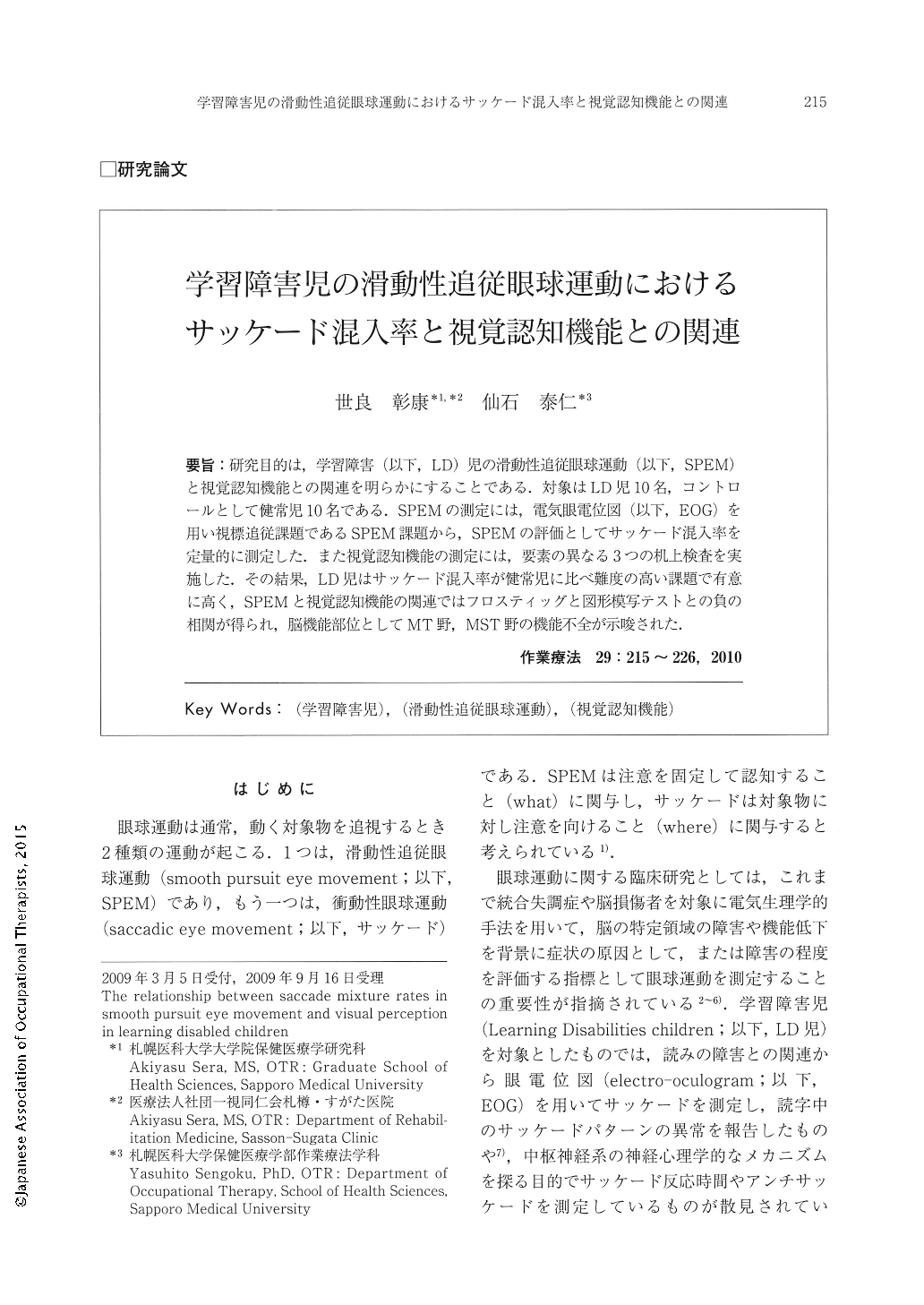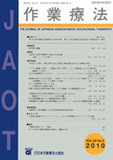Japanese
English
- 販売していません
- Abstract 文献概要
- 1ページ目 Look Inside
- 参考文献 Reference
要旨:研究目的は,学習障害(以下,LD)児の滑動性追従眼球運動(以下,SPEM)と視覚認知機能との関連を明らかにすることである.対象はLD児10名,コントロールとして健常児10名である.SPEMの測定には,電気眼電位図(以下,EOG)を用い視標追従課題であるSPEM課題から,SPEMの評価としてサッケード混入率を定量的に測定した.また視覚認知機能の測定には,要素の異なる3つの机上検査を実施した.その結果,LD児はサッケード混入率が健常児に比べ難度の高い課題で有意に高く,SPEMと視覚認知機能の関連ではフロスティッグと図形模写テストとの負の相関が得られ,脳機能部位としてMT野,MST野の機能不全が示唆された.
The purpose of this study was to describe the relationship between smooth pursuit eye movement (SPEM) and visual perception in learning disabled (LD) children using an electro-oculogram (EOG) and visual perception tests.
The subjects were 10 LD children with a mean age of 13.7 + 2.36 and 10 normal children with a mean age of 13.3±2.83.
The Nistamograph EN1104 (NEC) was used to create each subject's EOG. A total of 6 trials were conducted with optic angles of 10, 20 and 30 degrees and speeds of 0.142Hz and 0.1Hz. The subjects were instructed to pursue the target only with their eyes. SPEM was measured with both an ACEOG and an 8mm video camera. The EOG gave a quantitative measurement of ocular motility and saccade mixing rate in SPEM. To test visual perception, the space visualization test (SV) and design copying test (DC) of the Southern California Sensory Integration Tests (SCSIT) and the visualmotor coordination test of the Frostig Developmental Screening Test (Frostig) were used.
Results indicate that the LD children had markedly higher saccade mixtures compared with that of the normal children. The low scores on the Frostig and DC and the high saccade mixing rate may be attributed to Medial Temporal and Medial Superior Temporal area activity. In addition, the results suggest a relationship between SPEM and visual perception. The data also indicate that eye movement disorders seen in LD children are not simply a result of developmental immaturity, but have more of an organic dysfunction. These disorders may be related to dysfunctional integration in the Medial Temporal and Medial Superior Temporal areas.

Copyright © 2010, Japanese Association of Occupational Therapists. All rights reserved.


